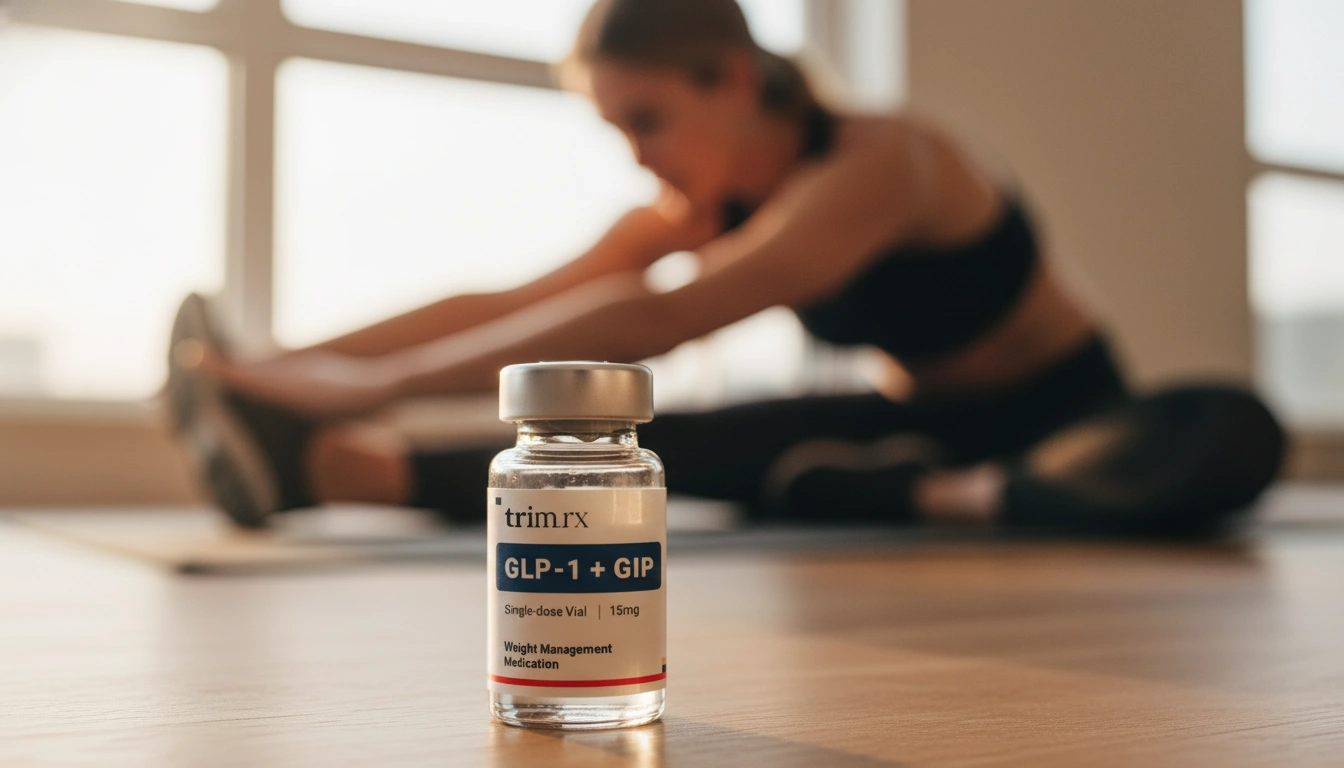Are All GLP-1 the Same? Exploring the Differences in GLP-1 Agonists

Introduction
Did you know that, according to recent studies, nearly 75% of people with type 2 diabetes are also overweight or obese? This dual challenge underscores the importance of effective weight management solutions. GLP-1 receptor agonists, initially developed for diabetes management, have emerged as a groundbreaking option for addressing both blood glucose control and weight loss.
Historically, the first GLP-1 agonist was approved by the FDA in 2005, but the real momentum in this class of medications has surged in recent years. With options like Semaglutide (Ozempic, Wegovy) and Tirzepatide (Mounjaro), patients now have access to treatments that can lead to substantial weight loss—often around 15-20% of body weight in clinical settings.
In this blog, we will discuss what makes each GLP-1 agonist unique, the science behind their efficacy, and how they fit into the broader context of weight management. We’ll also touch upon TrimRx’s commitment to personalized care, ensuring that individuals receive the right medication based on their unique health profiles.
What You Will Learn
By the end of this post, you will understand:
- The scientific principles behind GLP-1 agonists.
- The key differences between various GLP-1 medications.
- How these medications are prescribed and used in clinical practice.
- Potential side effects and considerations for safety.
- How personalized approaches can optimize weight loss and health outcomes.
Let’s dive into the fascinating world of GLP-1 agonists!
The landscape of weight loss and diabetes management has dramatically shifted over the past decade with the introduction of glucagon-like peptide-1 (GLP-1) receptor agonists. These medications have captured the attention of healthcare providers and patients alike, heralded for their dual benefits in managing blood sugar levels and promoting weight loss. However, with a growing number of GLP-1 agonists on the market, a common question arises: are all GLP-1s the same?
In this blog post, we will delve deep into the world of GLP-1 agonists, exploring their mechanisms, differences, efficacy, and safety profiles. By the end of our discussion, you will have a clearer understanding of these medications and how they can be tailored to meet individual health goals. We invite you to join us on this informative journey, especially if you’re considering weight loss as part of your health strategy.
Understanding GLP-1 and Its Role in the Body
GLP-1, or glucagon-like peptide-1, is a hormone that plays a crucial role in glucose metabolism and appetite regulation. It is secreted by the intestinal L-cells in response to food intake and serves several key functions:
- Stimulating Insulin Secretion: GLP-1 promotes the release of insulin from the pancreas, which is critical for lowering blood sugar levels.
- Inhibiting Glucagon Release: This hormone prevents the liver from producing too much glucose, particularly during fasting states.
- Slowing Gastric Emptying: By delaying the rate at which food leaves the stomach, GLP-1 enhances feelings of fullness and reduces appetite.
Given these functions, GLP-1 has become a focal point in developing treatments for type 2 diabetes and obesity. However, natural GLP-1 is rapidly degraded in the body, necessitating the development of synthetic analogs that can provide more prolonged effects.
The Evolution of GLP-1 Agonists
The journey of GLP-1 agonists began with the discovery of their potential in diabetes management. The first medication, Exenatide (Byetta), was approved in 2005. Since then, the class has evolved significantly, with newer agents offering improved efficacy, dosing convenience, and safety profiles.
Key GLP-1 Agonists Available Today
- Exenatide (Byetta): Administered twice daily, it was the first GLP-1 agonist but has largely been overshadowed by newer options.
- Liraglutide (Victoza, Saxenda): Approved for both diabetes and weight loss, it is administered daily and has shown effectiveness in both blood sugar control and weight management.
- Dulaglutide (Trulicity): A once-weekly option that simplifies adherence, it is known for its efficacy in lowering blood sugar.
- Semaglutide (Ozempic, Wegovy): A groundbreaking medication that can be administered weekly, it has demonstrated significant weight loss effects and is approved for both diabetes and obesity.
- Tirzepatide (Mounjaro, Zepbound): The newest entry, mimicking both GLP-1 and GIP (glucose-dependent insulinotropic polypeptide), showing impressive results in weight reduction and glycemic control.
How Do These Medications Differ?
The differences among these medications primarily lie in their dosing schedules, molecular structure, and resultant efficacy. For instance, while all GLP-1 agonists promote insulin secretion and weight loss, the extent of these effects can vary significantly.
- Dosing Frequency: Some medications require daily administration (like Liraglutide), while others (like Semaglutide and Dulaglutide) can be given weekly, enhancing patient adherence.
- Weight Loss Efficacy: Semaglutide and Tirzepatide have shown higher average weight loss percentages compared to older medications, making them more appealing for individuals focusing on weight management.
- Side Effects: While gastrointestinal side effects are common across all GLP-1 agonists, the intensity and frequency can vary. For example, newer agents may have different profiles regarding nausea and vomiting.
The Efficacy of GLP-1 Agonists in Weight Loss
Research indicates that GLP-1 agonists can lead to significant weight loss, which has been a game-changer for individuals struggling with obesity. Clinical trials have shown that medications like Semaglutide can help patients lose 15-20% of their body weight over a year, a substantial improvement compared to traditional weight loss methods.
Mechanisms of Weight Loss
The weight loss effects of GLP-1 agonists can be attributed to several mechanisms:
- Increased Satiety: These medications enhance feelings of fullness, making it easier to reduce caloric intake.
- Reduced Hunger: By acting on the brain’s appetite centers, GLP-1 agonists can diminish cravings and overall food intake.
- Slowed Digestion: Delaying gastric emptying not only helps manage blood sugar levels but also prolongs the sensation of fullness.
Clinical Evidence Supporting GLP-1 Agonists
Numerous studies underscore the effectiveness of GLP-1 agonists in managing weight. For instance, a recent meta-analysis highlighted that Semaglutide led to a greater reduction in body weight compared to older GLP-1 medications, further solidifying its role in obesity treatment.
Safety and Side Effects of GLP-1 Agonists
While GLP-1 agonists are generally well-tolerated, they are not without side effects. Patients may experience nausea, vomiting, diarrhea, and constipation—common issues due to the medications’ effects on the digestive system.
Considerations for Safety
- Gastrointestinal Issues: These are the most frequently reported side effects, often happening during the initiation of therapy or with dosage increases.
- Risk of Pancreatitis: Although rare, there have been reports of pancreatitis associated with GLP-1 use. Patients should be monitored for abdominal pain or other symptoms.
- Allergic Reactions: Some individuals may experience allergic reactions, necessitating immediate medical attention.
Importance of Personalized Care
At TrimRx, we prioritize individualized treatment plans. Our approach includes comprehensive consultations, lab work, and ongoing support to ensure that each patient’s experience with GLP-1 agonists is both safe and effective. We encourage you to take our free assessment quiz to see if you qualify for personalized weight loss medications, including GLP-1 agonists.
Take our free assessment quiz here!
Comparing GLP-1 Agonists: Which One is Right for You?
Choosing the right GLP-1 agonist involves considering various factors, including individual health conditions, weight loss goals, and medication tolerance. Here are some key considerations:
- Health Goals: Are you primarily focused on managing diabetes, or is weight loss your main concern? This can influence the choice of medication.
- Side Effect Profile: If you have a history of gastrointestinal issues, you may want to discuss which GLP-1 agonist is likely to cause fewer discomforts.
- Dosing Preferences: Some patients may prefer a once-weekly injection over a daily regimen for ease of use.
Personalized Weight Loss Programs at TrimRx
At TrimRx, we believe that successful weight loss requires a tailored approach. Our programs include medications like Semaglutide and Tirzepatide, which are provided through FDA-registered pharmacies. We emphasize a comprehensive service that includes doctor consultations, medication, lab work, unlimited support, and shipping with no hidden fees.
In addition to prescription medications, we offer quick-access supplements like GLP-1 Daily Support and Weight Loss Boost to support your weight loss journey. These products can be a useful complement to our personalized weight loss programs.
Conclusion
As we’ve explored throughout this post, while all GLP-1 agonists share a common goal of improving glycemic control and promoting weight loss, they are not all the same. Each medication brings unique features, benefits, and potential side effects, making it essential to approach treatment with a personalized mindset.
By understanding the nuances of these medications and the science behind their effectiveness, we can make informed choices about our health. If you’re considering a GLP-1 agonist as part of your weight loss journey, we invite you to reach out to us at TrimRx for personalized support tailored to your individual needs.
FAQ
What are GLP-1 agonists?
GLP-1 agonists are medications that mimic the action of the GLP-1 hormone, helping to regulate blood sugar levels and promote weight loss.
How do GLP-1 agonists work?
They stimulate insulin secretion, inhibit glucagon release, slow gastric emptying, and increase feelings of fullness.
Are there different types of GLP-1 agonists?
Yes, there are several GLP-1 agonists available, including Semaglutide, Liraglutide, Dulaglutide, Tirzepatide, and Exenatide, each with unique dosing and efficacy profiles.
What side effects are associated with GLP-1 agonists?
Common side effects include gastrointestinal issues such as nausea and vomiting. More serious risks include pancreatitis and allergic reactions.
How can I determine which GLP-1 agonist is right for me?
Consulting with a healthcare provider is crucial, as they can consider your health goals, medical history, and preferences to recommend the best option.
For any further questions or to begin your personalized weight loss journey with TrimRx, don’t hesitate to take our free assessment quiz today!

Transforming Lives, One Step at a Time
Keep reading
7 Tips for Sticking to GLP-1 Injection Schedules
Seven practical strategies to keep weekly GLP‑1 injections on schedule—pick a routine day, set reminders, manage side effects, rotate sites, and avoid missed doses.
Custom GLP-1 Dosing for Kidney Disease
Personalized GLP-1 dosing for CKD patients with monitoring, dehydration and hypoglycemia risk mitigation, and guidance across all kidney disease stages.
Semaglutide vs Tirzepatide: Approved Uses
Two leading diabetes and weight-loss drugs differ in FDA-approved benefits — one adds heart, kidney and liver protection; the other treats obstructive sleep apnea.



